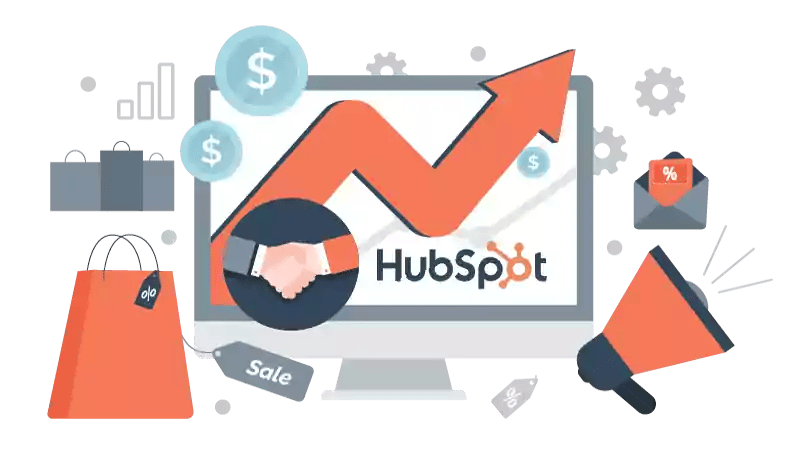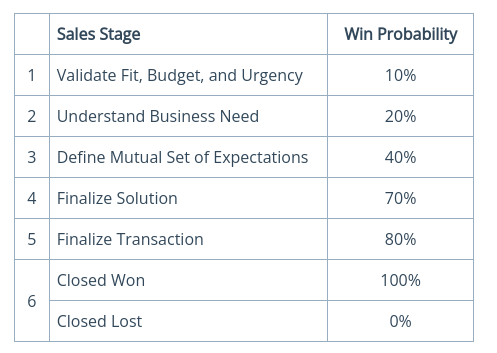HubSpot Pipelines and Deal Stages | Best Practices for Sales Managers
Are you feeling lost in the fog of your sales pipeline? HubSpot's deal stages can be the key to clarity.
By defining clear stages in your pipeline, you can forecast revenue confidently, pinpoint areas where deals stall, and equip your sales reps with the insights they need to close more deals.

Understanding the Power of Pipelines and Deal Stages
Many sales pipelines are shrouded in obscurity. Deals enter the system, and some progress, but their exact location and the reasons behind stalls remain frustratingly unclear. This lack of transparency makes forecasting revenue a guessing game and coaching sales reps a reactive scramble. Fortunately, HubSpot pipelines and deal stages address these challenges by clearly representing your sales journey.
What are HubSpot Pipelines and Deal Stages?
-
HubSpot Pipelines: A pipeline represents a prospect's different stages before becoming a customer. Think of it as a roadmap outlining the steps involved in your sales process.
-
Deal Stages: Each stage within the pipeline reflects a specific set of activities in the sales journey. For example, common deal stages include "Understand Business Needs," "Define Mutual Set of Expectations," and "Finalize Solution." HubSpot provides default stages, but you can (and should) customize them to match your sales process.
Benefits of Clear Pipelines and Deal Stages
-
Identify bottlenecks: Defined stages function as checkpoints, pinpointing the exact places where prospects drop off in the sales funnel. Are they stalling after the initial call? Do they disappear after a demo? This newfound visibility allows you to identify bottlenecks and intervene with targeted nurturing strategies. For instance, a high number of stalled deals at the qualification stage might suggest that marketing is sending unqualified leads your way. Identifying a drop-off after demos might point towards a need for improved product presentations or more compelling post-demo follow-up emails.
-
Accurate forecasting: By understanding the average time spent in each stage and assigning win probabilities, you can predict with greater confidence when deals will close and how much revenue they'll generate. This foresight empowers you to effectively plan resources, avoiding last-minute scrambles and setting realistic goals for your team. Imagine the difference between operating blindly and having a clear picture of your sales pipeline – you can strategically allocate resources to deals with the highest probability of closing, ensuring optimal efficiency.
-
Smarter nurturing: Generic marketing emails sent to prospects at all stages are a scattershot approach that likely yields minimal results. With defined stages, you can tailor communications directly based on a prospect's position in the sales journey. Leads in the early stages might receive educational content that addresses their specific pain points. At the same time, those nearing a decision might be exposed to case studies or special offers that showcase the value proposition of your product or service. This personalized approach dramatically increases the effectiveness of your nurturing efforts and propels deals further down the pipeline.
By visualizing the sales journey, you gain a deeper understanding of your process, empowering you to refine nurturing strategies, forecast revenue with confidence, and ultimately drive a thriving sales team.
Building Your Dream Pipeline in HubSpot: Craft a Sales Journey for Success
Imagine a sales pipeline that isn't just functional but a finely tuned machine perfectly aligned with your unique sales process. This is the power of customizing pipelines and deal stages in HubSpot. By tailoring these elements, you gain crystal-clear visibility into your sales journey, empowering you to identify bottlenecks, forecast revenue accurately, and ultimately close more deals.
Define Your Sales Process: The Foundation for Success
The first step to building your dream pipeline is understanding your own sales process. This might seem obvious, but it's a crucial foundation. Tailoring deal stages to your specific process ensures they accurately reflect the steps prospects take before becoming customers. A generic pipeline won't capture the nuances of your unique sales cycle, leading to blind spots and hindering your ability to optimize performance.
The key is to align sales and marketing teams, ultimately creating a seamless buying experience for your prospects.
Beyond the Defaults: Craft Stages for B2B and B2C Sales
HubSpot CRM provides a set of default deal stages, offering a solid starting point. However, the true power lies in customization. Here's where you can craft deal stages that perfectly mirror your sales journey for both B2B and B2C companies.
B2B Example:
-
Lead Qualification: This stage verifies a prospect's suitability for your product or service. Activities might include needs assessments, budget discussions, and qualification calls.
-
Meeting Scheduled: A confirmed meeting with a key decision-maker signifies a significant step forward.
-
Needs Discovery Meeting: This in-depth exploration uncovers the prospect's specific challenges and explores how your solution aligns with their needs.
-
Proposal Sent: A well-crafted proposal outlines your solution, pricing, and value proposition.
-
Contract Negotiation: This stage involves discussions and negotiations to finalize the terms of agreement.
-
Deal Closed-Won: Congratulations! Your prospect has signed on the dotted line and is now a valued customer.
B2C Example:
-
Lead Captured: A potential customer submits their contact information or expresses interest in your product or service.
-
Welcome Email Sent: A personalized welcome email establishes a positive initial connection and introduces your brand.
-
Product Demo Completed: An interactive demonstration showcases the features and benefits of your product.
-
Cart Abandoned: A prospect adds items to their cart but doesn't complete the purchase. Targeted follow-up can recover these lost sales.
-
Purchase Complete: The customer has successfully completed their order and is on their way to receiving your product.
-
Post-Purchase Follow-Up: A personalized follow-up email ensures customer satisfaction, gathers valuable feedback, and potentially upsells complementary products.
These are just a few examples, and the ideal structure for your pipeline will depend on your specific sales process.
Probability Percentages
Associating probability percentages with each deal stage adds another layer of sophistication to your pipeline. By analyzing historical data, you can assign a percentage likelihood of a deal closing at each stage. For instance, a "Finalize Solution" might have a 70% chance of progressing to the "Closed Won" stage, while a "Finalize Agreement" stage might boast a 90% closing probability. These percentages empower you to:
-
Forecast revenue more accurately: By understanding the average value of deals in each stage and their likelihood of closing, you can predict future revenue with greater confidence.
-
Focus resources on high-probability deals: Sales reps can prioritize their efforts on deals with the highest closing potential, maximizing efficiency and results.
-
Identify areas for improvement: If a specific stage consistently falls below its expected probability, it indicates a potential bottleneck in your sales process. You can then investigate the reasons behind this and implement corrective measures.
By customizing deal stages and incorporating probability percentages, you transform your pipeline from a static snapshot into a dynamic roadmap for sales success.
Optimizing Your Sales Pipeline for Growth
By leveraging HubSpot's automation features and data-driven insights, you can streamline your sales process, identify bottlenecks, and propel your team toward explosive growth.
Automation Drives Deals Forward
HubSpot's automation features take the grunt work out of nurturing leads and moving prospects through the pipeline. Imagine the time saved by automating repetitive tasks – that's more time your reps can dedicate to building relationships and closing deals.
Here's how automation can supercharge your sales pipeline:
-
Stage-Based Email Sequences: Craft personalized email sequences triggered by a prospect's movement through the pipeline. For example, an automated email might greet a newly qualified lead with a warm welcome and valuable educational content. Another email sequence might follow up with a prospect who hasn't responded to a demo, offering additional resources or scheduling a call for further discussion. These automated sequences ensure consistent communication and keep your brand top-of-mind throughout the buyer's journey.
-
Automated Tasks and Reminders: Relieve your reps of the burden of manual data entry and scheduling. HubSpot can automatically update deal stages, create tasks based on specific triggers, and send reminders to ensure nothing falls through the cracks.
-
Smart Content Personalization: Dynamically personalize website content based on a prospect's place in the pipeline. Imagine showcasing case studies relevant to their industry during the proposal stage or highlighting specific product features that address their pain points. This level of personalization fosters stronger connections and accelerates deal progression.
By embracing automation, you free your reps from administrative tasks and empower them to focus on high-impact activities like building relationships and closing deals. This not only boosts their productivity but also enhances their morale and fuels overall sales team success.
Data-driven Decisions
HubSpot's sales analytics tools transform your pipeline into a treasure trove of valuable data. This data empowers you to identify roadblocks, measure progress, and make data-driven decisions that optimize your sales process.
Here's how to leverage sales analytics for pipeline growth:
-
Identify Bottlenecks: Track key metrics like average deal length per stage and conversion rates between stages. These insights pinpoint areas where deals are getting stuck. For instance, a consistently high number of proposals stalling in negotiation could indicate a need for improved negotiation training for your reps.
-
Measure Pipeline Health: HubSpot's pipeline velocity metric reveals how quickly deals are progressing through your pipeline. Analyzing trends in velocity allows you to assess the overall health of your pipeline and identify areas for improvement.
-
Track Rep Performance: Gain valuable insights into individual rep performance by drilling down into deal stage ownership and conversion rates. This data allows you to identify top performers and implement best practices across the team.
Regularly analyzing these key metrics gives you a crystal-clear understanding of your pipeline's health and performance. This data-driven approach equips you to make informed decisions about resource allocation, identify areas for sales coaching, and ultimately optimize your pipeline for maximum growth.
Training Your Team
While automation and data analytics play a crucial role in optimizing your pipeline, it's vital to remember the human element: sales training. Your sales reps are the driving force behind closing deals, and consistent deal stage usage is essential for accurate reporting and data analysis.
-
Standardize Deal Stage Usage: Develop clear guidelines for using deal stages and ensure your team understands the criteria for moving a prospect from one stage to the next. Schedule regular training sessions to address questions and reinforce consistent practices.
-
Coaching Based on Pipeline Insights: Utilize data from your pipeline to identify areas where reps might need additional support. For example, if a rep consistently struggles with closing deals at the proposal stage, you might provide coaching on negotiation techniques or offer role-playing exercises to refine their skills.
Going Beyond the Basics
While the strategies discussed so far lay a solid foundation, your pipeline can evolve alongside your business. For complex sales cycles across a variety of industries with different processes, consider implementing multi-pipeline setups. This allows you to tailor pipelines to specific processes or business models, e.g., B2B versus B2C, ensuring a more granular view of deal progression.
A commonly used process in B2B is the "Collaborative Selling" approach we are recommending as an upgrade from the commonly defined "default process" with the following stages:
Note the activity-focused nomenclature of sales stages with clearly defined deliverables for each stage.
Furthermore, don't underestimate the power of CRM integration. HubSpot CRM seamlessly integrates with marketing automation tools. Imagine nurturing leads with targeted content based on their behavior and website activity, automatically qualifying them and pushing them into your sales pipeline when they're ready. This creates a seamless buyer journey, fostering a positive brand experience from initial awareness to final purchase. By exploring these advanced strategies and leveraging the power of integration, you can transform your HubSpot CRM pipeline from a valuable tool into a cornerstone of your sales success strategy.
By combining the power of automation and data-driven insights with the expertise and dedication of your sales team, you create a winning formula for pipeline optimization. This approach ensures a streamlined sales process, identifies opportunities for improvement, and ultimately fuels long-term sales success. So, embrace automation, leverage data to your advantage, and empower your team – these are the keys to unlocking the full potential of your HubSpot pipeline and driving your sales organization to new heights.
HubSpot Deal FAQs
In HubSpot, deals represent transactions with contacts or companies and are tracked through your sales process in pipeline stages until they are won or lost. Deals are used to track potential revenue and can be associated with other records, such as contacts and companies involved in the deal.
On the other hand, a quotation typically refers to a formal statement of the price and terms of a transaction provided to a potential customer before a deal is made. A deal encompasses the entire sales process, whereas a quotation is usually a single step or document.
This content is also available in:
- German: HubSpot Pipelines und Deal Stages | Best Practices für Vertriebsleiter
- Spanish: HubSpot Pipelines: Gestiona Ventas | Mejores Prácticas
- French: Pipelines et étapes de transaction HubSpot | Meilleures pratiques
- Italian: Pipeline di vendita HubSpot: best practice per sales manager
- Romanian: Optimizarea Pipeline-ului de Vânzări în HubSpot: Ghid pentru Manageri
- Chinese: HubSpot 销售管道和交易阶段 | 销售经理的最佳实践

Joachim is a certified HubSpot trainer with over 13 years of experience in content marketing, strategy, website development, and SEO. He has implemented numerous large-scale, international growth marketing programs, including one with UiPath, which grew from a startup to a successful IPO on the NYSE. Joachim has special expertise in multilingual marketing and sales enablement projects, and he uses the latest AI technologies to help our clients.










Leave a Comment